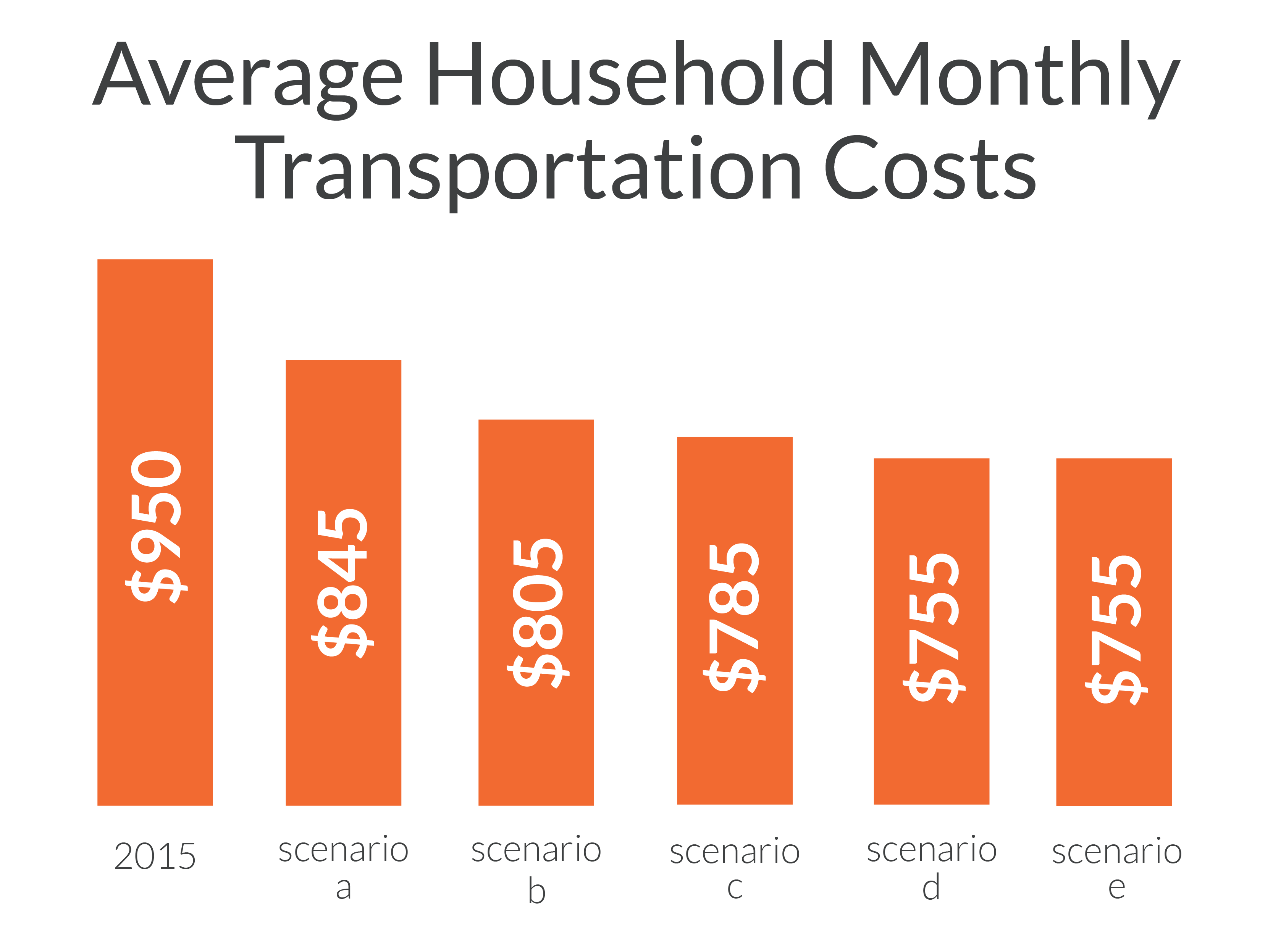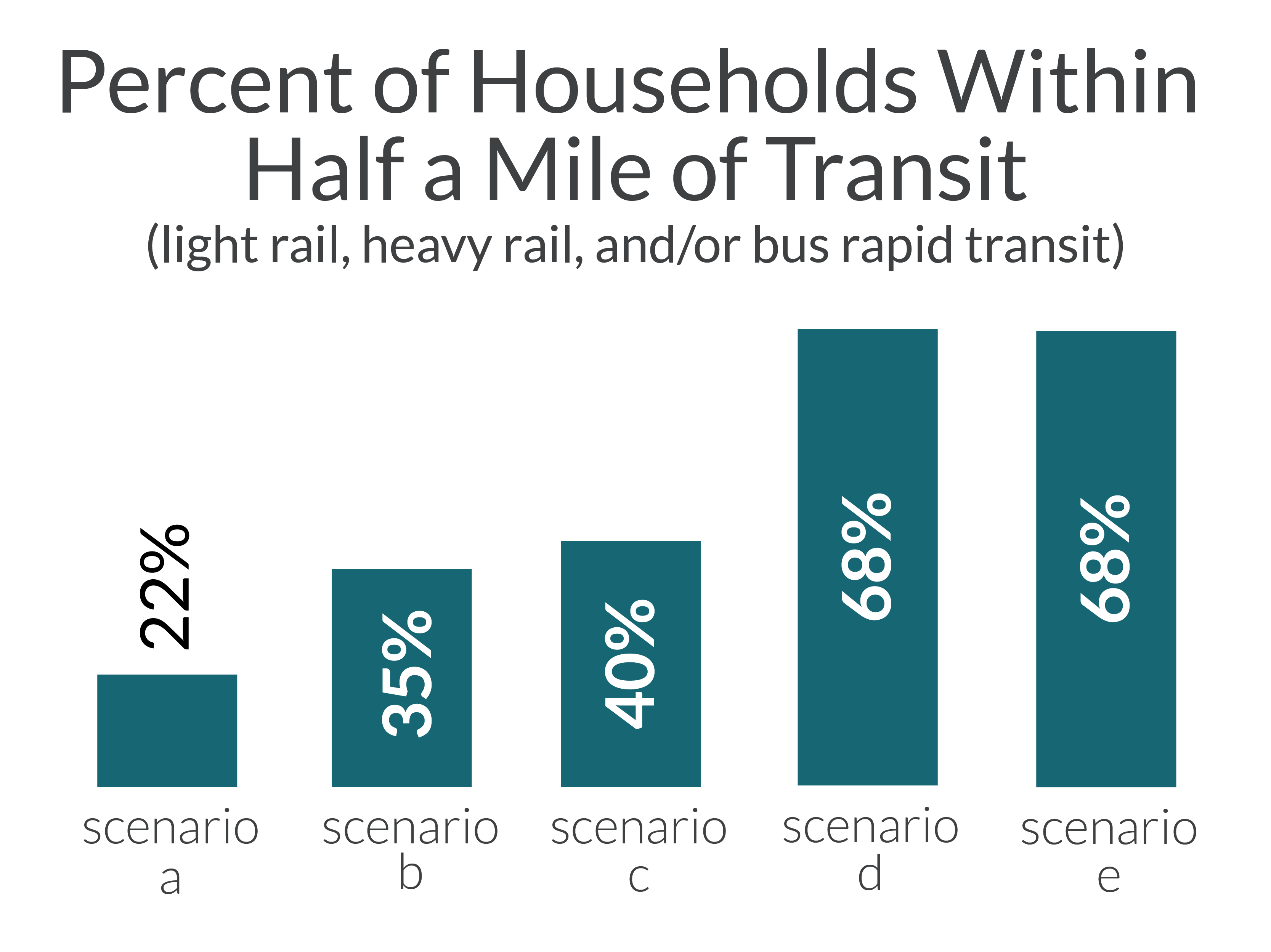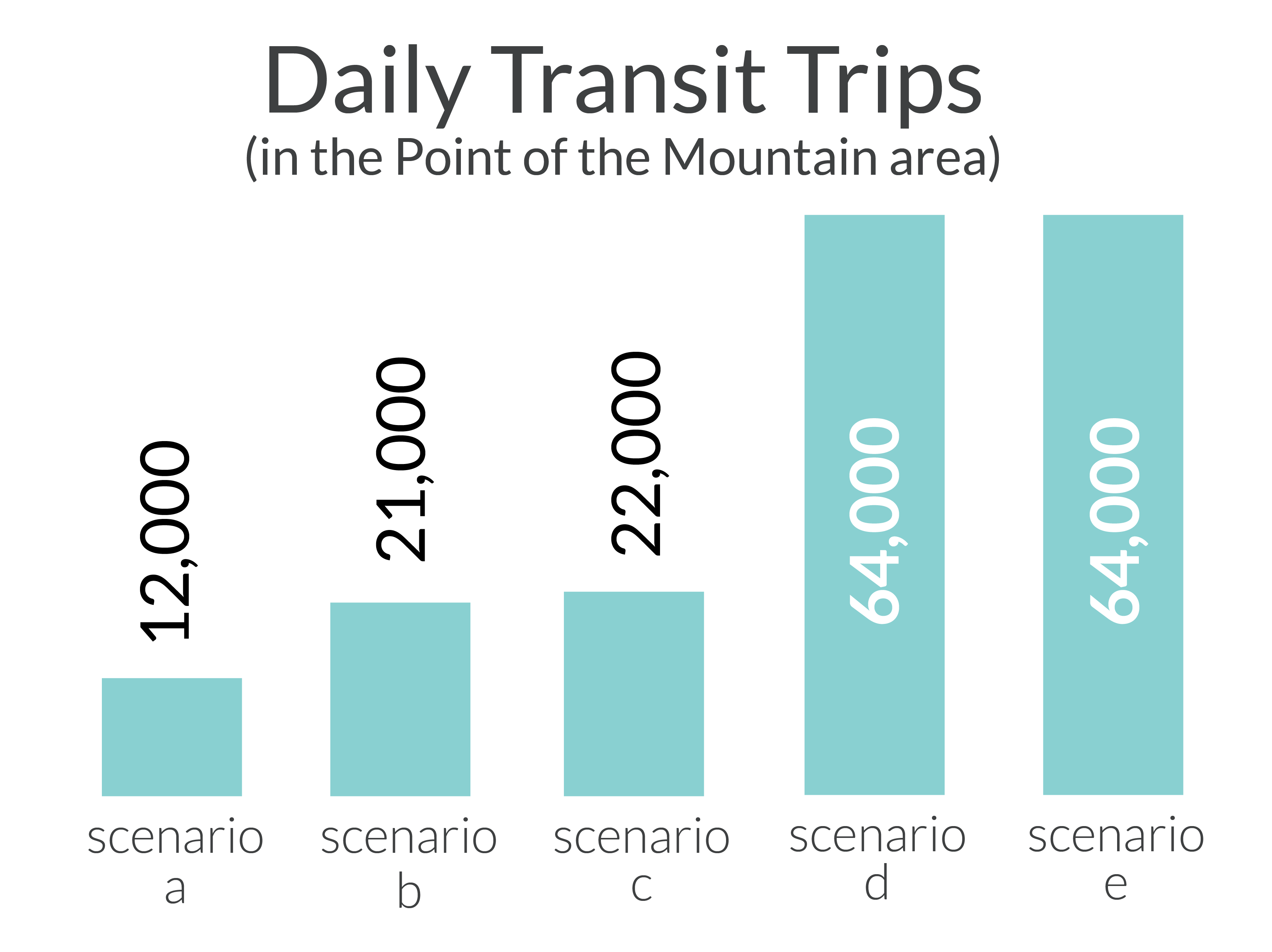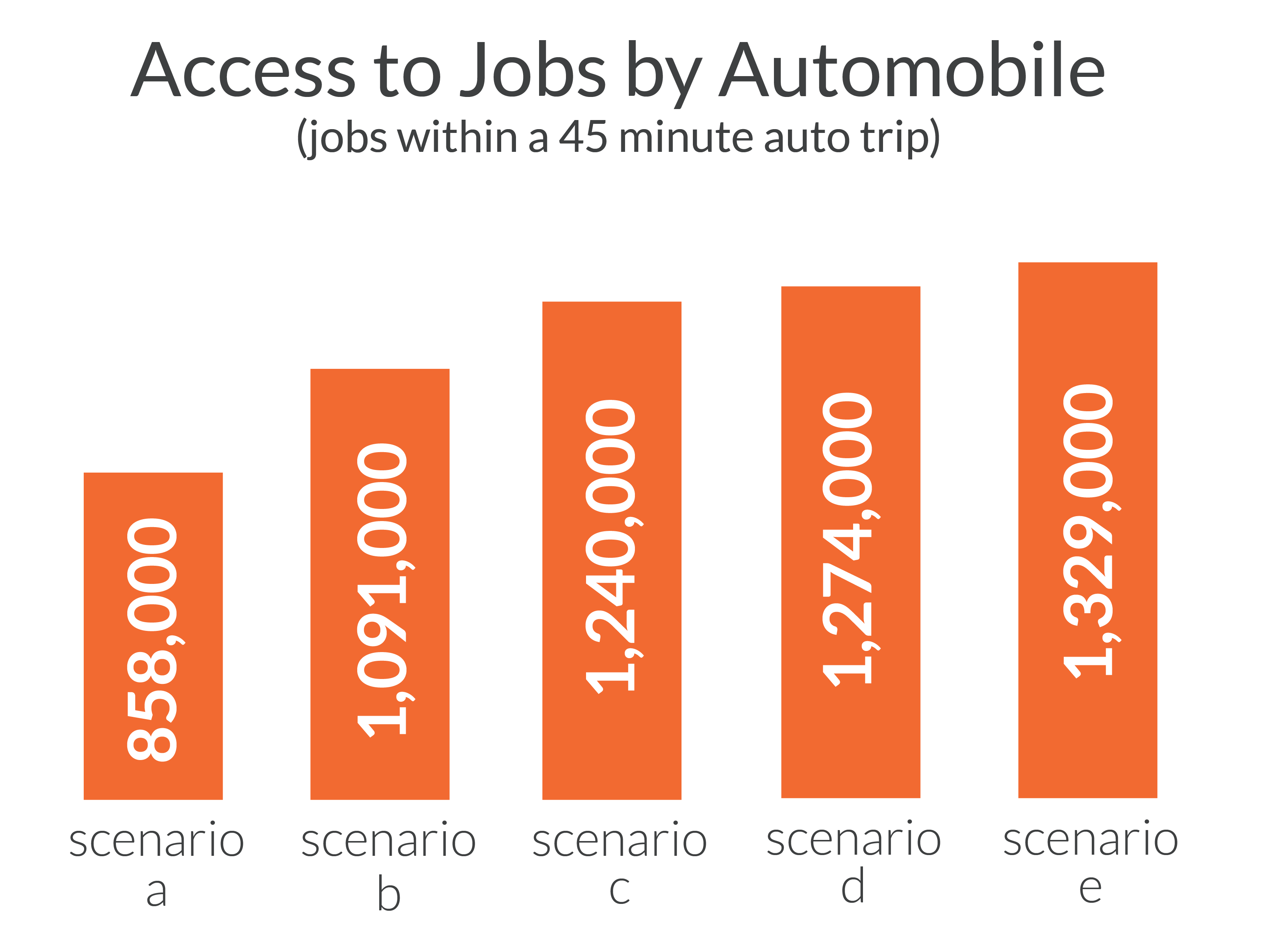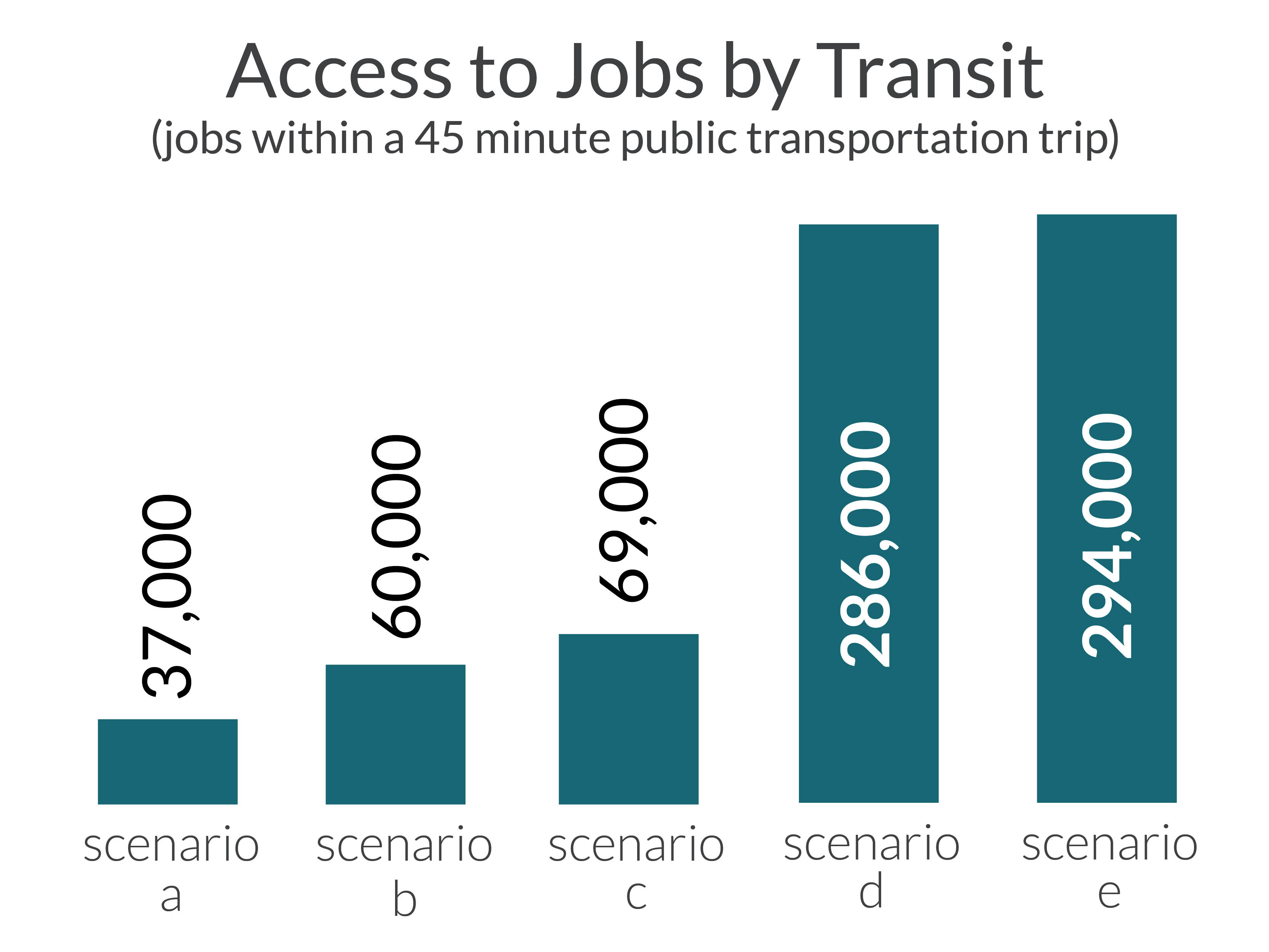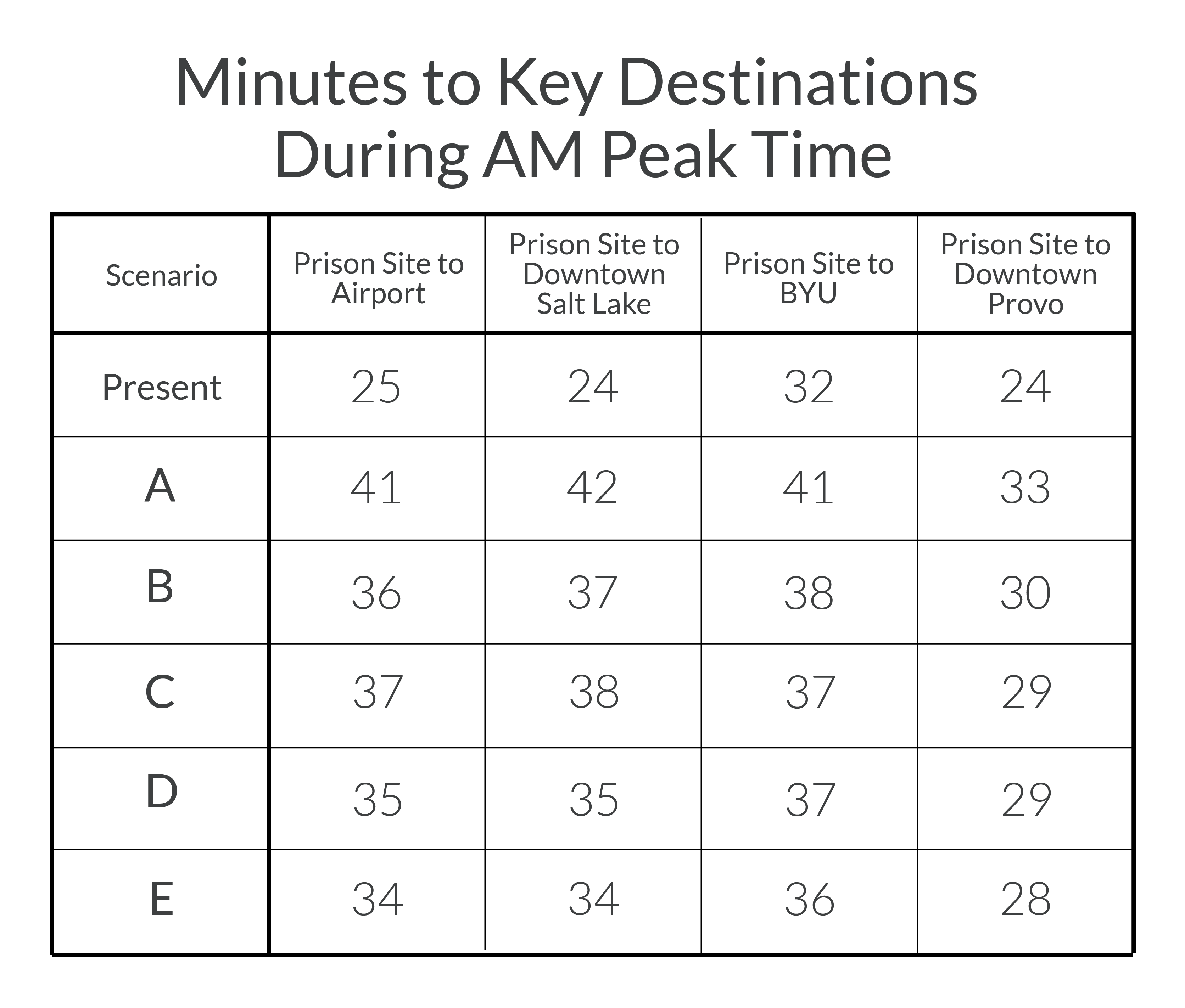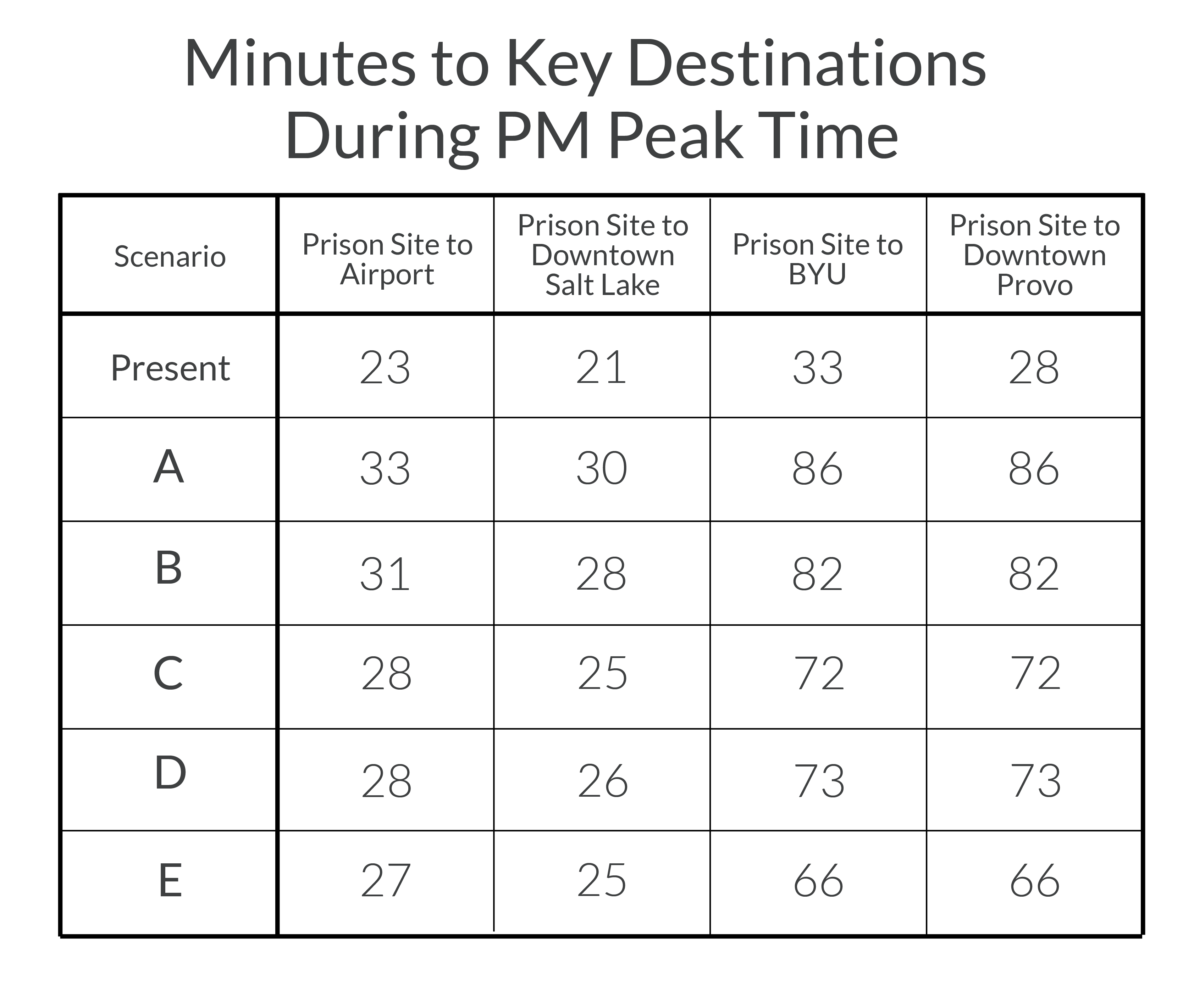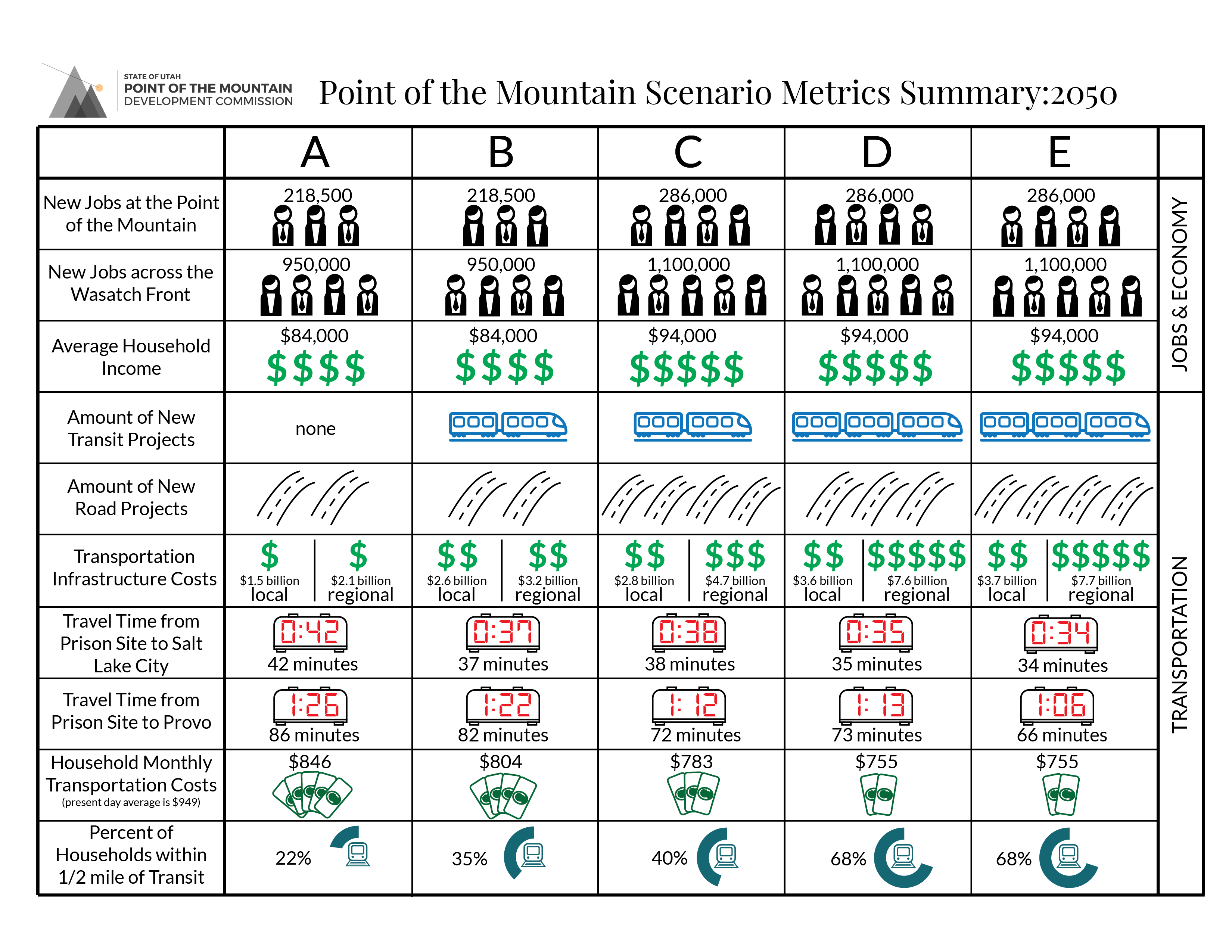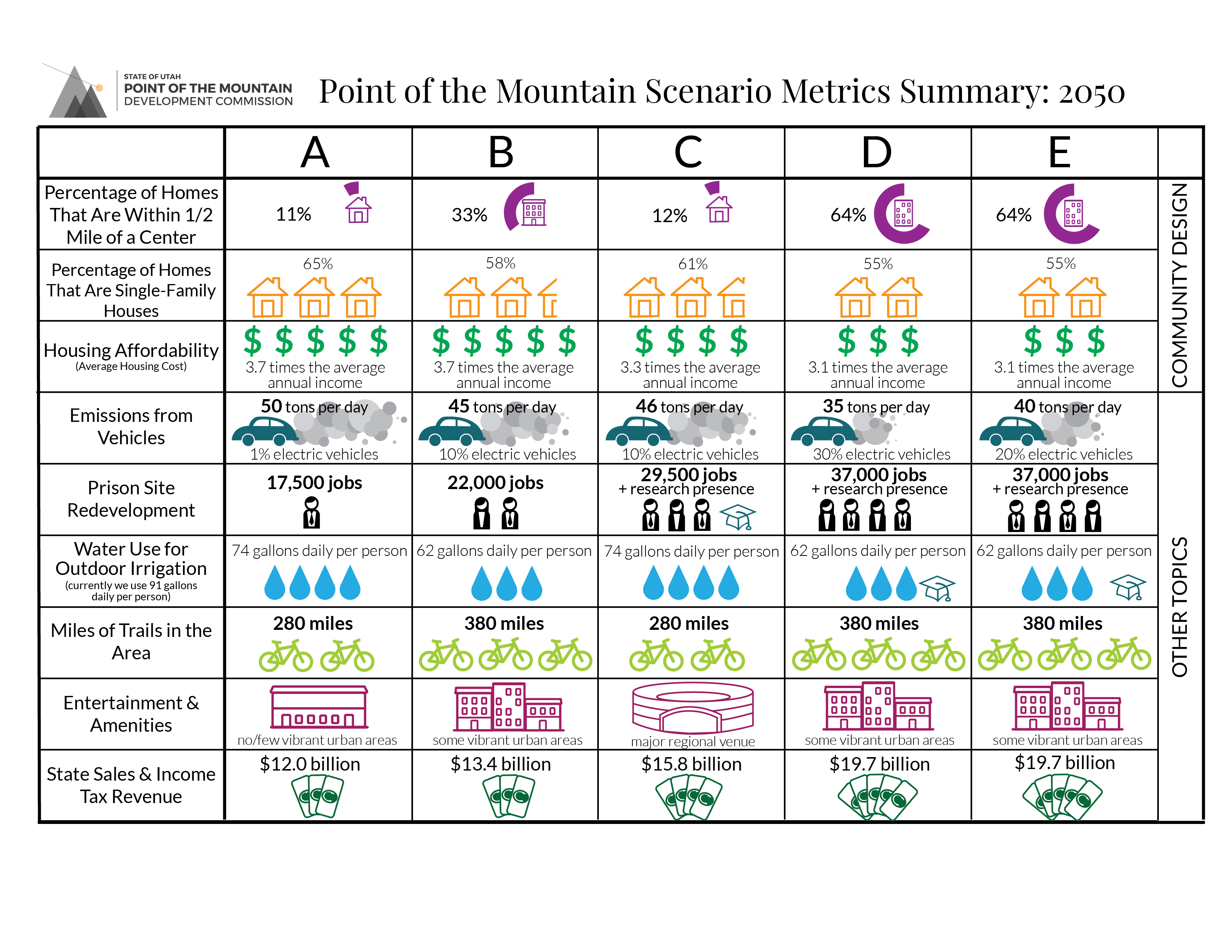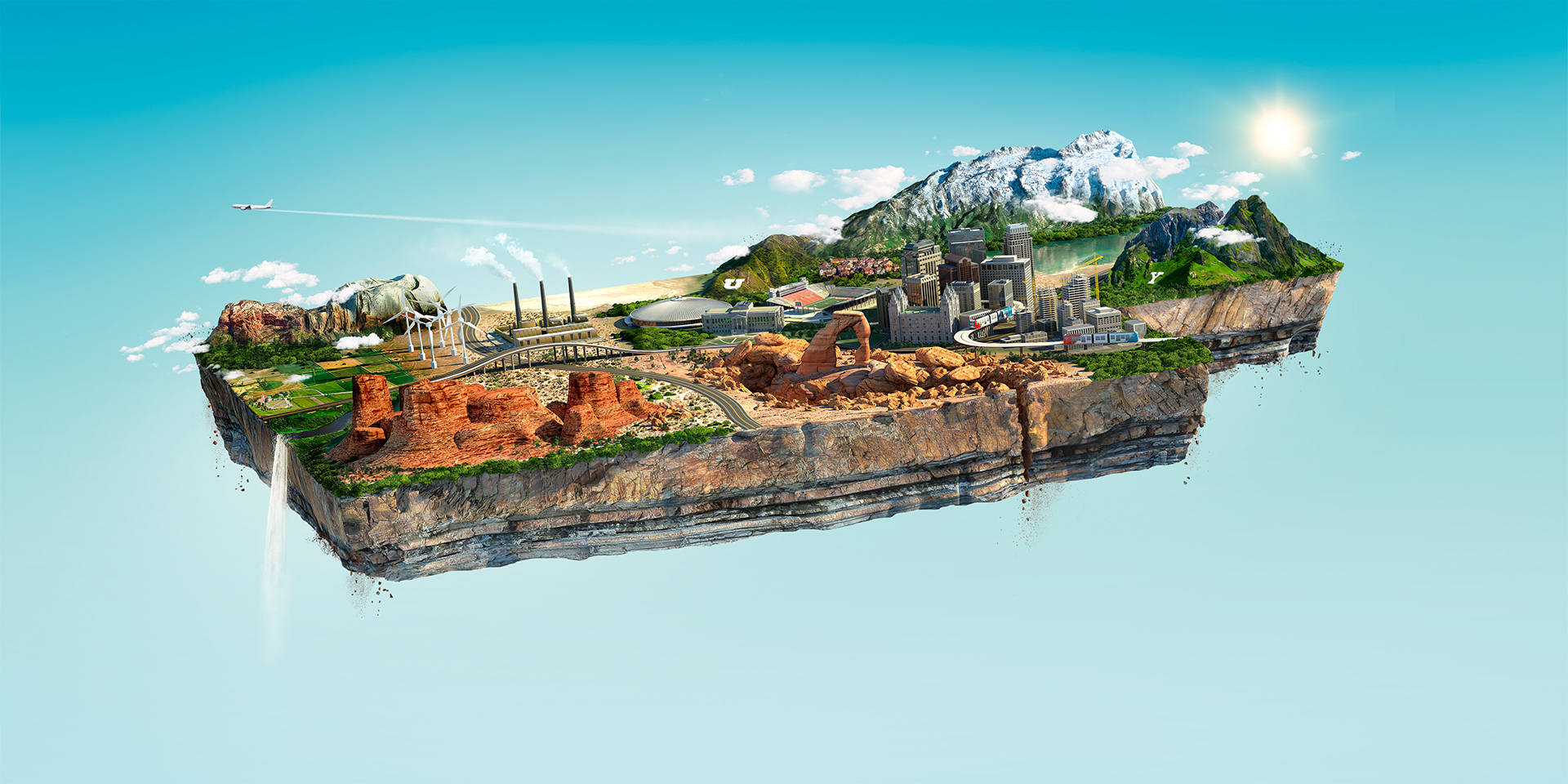The Story
Additional economic development leads to more jobs and households. Many freeways and other roads are widened, and additional roadways are built to help establish a connected grid of larger roads, although local roads often don’t connect, so people must travel on larger collectors, arterials, and freeways to reach destinations. The additional roadways require funding beyond existing sources or reprioritization of funding. Some new transit is also built, which requires new funding beyond existing sources or reprioritization of funding. People spend less time and money on driving in this scenario than in A or B, but more than in D and E. Infrastructure costs are higher than in scenarios A or B, but lower than in D and E.
Funded road projects in this scenario include:
- The Mountain View Corridor expanded as a freeway through SR-73 (with 10 total lanes between 2100 North and Bangerter Highway, in addition to frontage roads)
- I-15 widening projects (12 total lanes)
- A frontage road system along I-15 between SR-92 and 10600 South (4 lanes total)
- Redwood Road widening projects (6 lanes total between Lehi 2100 North and Bangerter Highway)
- A new I-15 interchange at the gravel pits
- A new north-south arterial connecting Bangerter Highway to Lehi 2100 North in between I-15 and Redwood Road (4 lanes total)
- A new freeway connection between Mountain View Corridor and I-15 near the county line (4 lanes total)
- A new freeway connection between Mountain View Corridor and Bangerter Highway at 13400 South (4 lanes total)
- Widening projects along 14400 South/14600 South (4 lanes total)
- The development of many collector roads, creating a connected grid for communities across the Point of the Mountain
Funded transit projects in this scenario include:
- A Blue Line TRAX extension to Lehi
- A Bus Rapid Transit line from the Red Line stop in Daybreak to the prison site (running along 12600 South)
Results
- From the Point of the Mountain during AM peak period, it takes 38 minutes to drive to downtown Salt Lake City, 37 minutes to the Salt Lake airport, and 50 minutes to the University of Utah. During PM peak period, it takes 72 minutes to drive to downtown Provo.
- A typical Point of the Mountain resident can access 1.24 million jobs within a 45-minute commute by car, or 69,000 jobs within a 45-minute commute by public transportation.
- 22,000 trips in the Point of the Mountain area are made by public transportation each day.
- On average, a Point of the Mountain household pays $785 per month for travel expenses (gas, insurance, car payments, transit fares, etc.).
- Over the next 33 years, new transportation infrastructure in the area costs $4.7 billion for regional projects and $2.8 billion for local projects.
- 40% of homes in the area are within ½ mile of high-frequency public transportation (e.g., bus rapid transit, TRAX, and FrontRunner).
- 41% of the work trips from Point of the Mountain residents never leave the Point of the Mountain area.
